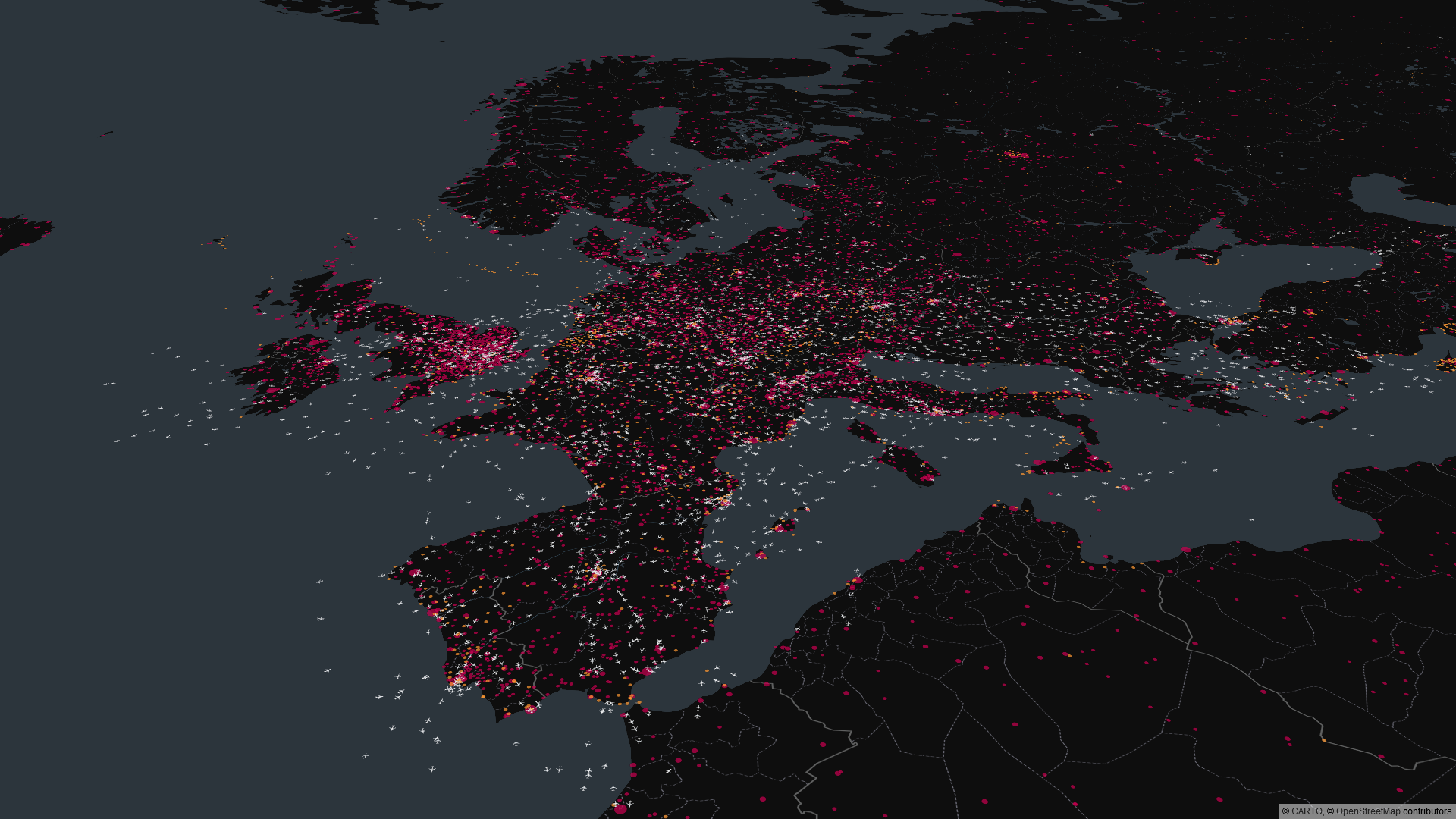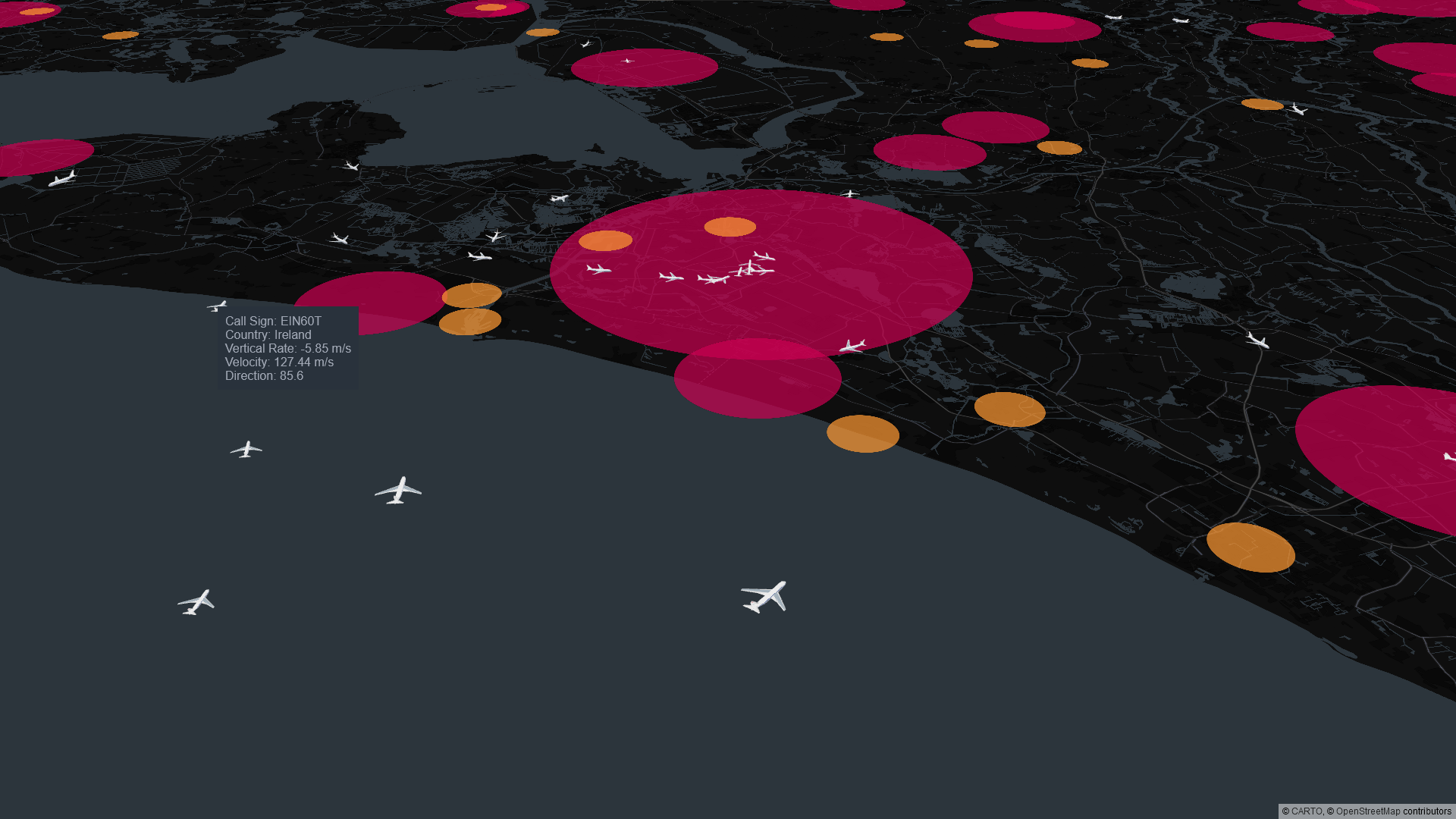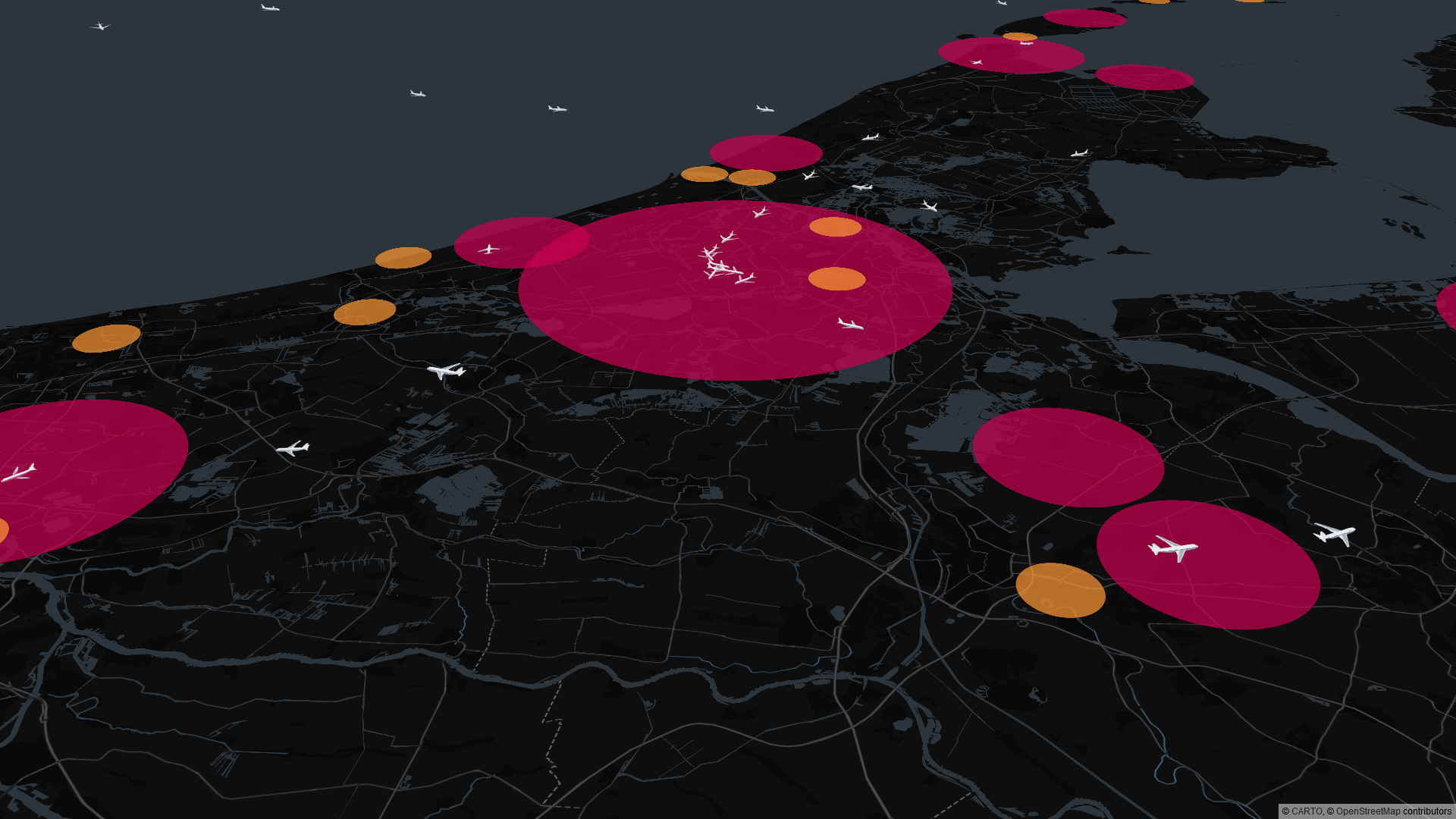Nest interface POC
Nest is a web-based user interface developed as a proof of concept (POC) to demonstrate the capability of efficiently representing large amounts of geospatial and aircraft telemetry data within a three-dimensional map environment, all within a browser. This project serves as an innovative solution for visualizing three-dimensional airspace and its activity.

Project Background
The Nest interface POC was conceived to demonstrate the feasibility of developing a web interface for Project Nest. The primary goal was to illustrate that a browser-based application can effectively render a 3D airspace environment and display its dynamic activities. Traditional airspace monitoring systems often rely on specialized software, which can be limiting. By leveraging web technologies, Nest aims to offer a more versatile and accessible solution.

Objectives
The main objective of the Nest UI proof of concept (POC) was to demonstrate the efficient rendering of geospatial data and aircraft activity using deck.gl. Specifically, this POC aimed to showcase:
- A functional 3D map interface.
- Visualization of geospatial data, including airports and helipads.
- Real-time 3D visualization of aircraft activity within the airspace using data from an API.
Methodology
The Nest UI POC was developed using deck.gl, a powerful WebGL-based framework that enables efficient rendering of complex geospatial data directly in the browser. The interface integrates data from an API to display real-time aircraft telemetry. The use of deck.gl allowed for seamless visualization of both 3D and geospatial data, making the interface intuitive and responsive.

Conclusion
The Nest UI POC has demonstrated the potential for creating an efficient, browser-based interface for visualizing three-dimensional airspace and its activities. While the current interface is simplistic and serves as a proof of concept, it establishes a solid foundation and lays one of the first stones for Project Nest. The success of this POC paves the way for more sophisticated and functional web-based airspace monitoring systems, promising significant advancements in how we visualize and manage airspace activities.